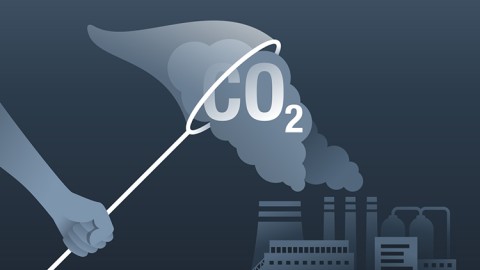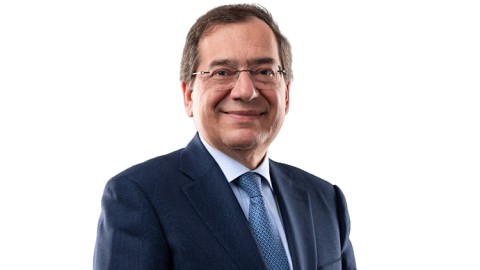Under the umbrella of the Modernization Project, health, safety and environment (HSE) comes as a top priority to secure the industry’s work environment. This stems from the belief that the oil and gas industry’s success is based on lowering its risks. Thus, the Ministry of Petroleum and Mineral Resources (MoP) has endeavored to ensure safety on both levels; the employees’ safety and the occupational safety.
The MoP, through assessing the sector’s incidents, found out that the main factor of those incidents goes back to the human element. As a result, the ministry directed its efforts towards enhancing the HSE system in the petroleum activities and operations. This system will ensure operations’ sustainability in high levels of security and safety for the employees and assets.
The Ministry’s Achievements
In this regard, the MoP followed several tracks to secure the oil and gas sector. The ministry seeks at all times to achieve the highest levels of international performance of HSE and commit to the HSE regulations and laws. To provide a proper HSE management and a risk management approach, the ministry provides training programs and workshops to the employees to enhance their HSE awareness.
I. HSE Events
The ministry was notably keen to organize a number of prominent events to promote the execution of its belief. The ministry conducted the annual Safety Day, along with its Safety Week, to make sure that every petroleum entity follows a robust HSE system.
During the Safety Day event, held in December 2019, international oil companies (IOCs) as well as national oil companies (NOCs) followed up on the latest HSE system implementation, discussing the importance of this approach to increase employees’ awareness.
On the same track, Tarek El Molla, the Minister of Petroleum and Mineral Resources, announced at the annual Safety Day that each company will be assessed by its application of an HSE system, similar to those of the IOCs. Furthermore, HSE measurements will be included to individual assessments of all employees on a quarterly basis to enhance their safety behavior.
El Molla said that the ministry is going to establish a high HSE committee to be responsible for governing the safety system and posting unified rules and policies in line with the international standards, in addition to supervising law’s execution.
II. Safety Driving, Control of Work, Contractor’s Management
The ministry studied the main reasons behind the sector’s accidents, and found out that driving vehicles, control of work (CoW) in addition to contractor’s management are the most fields causing problems in the sector. So, the ministry seeks to tackle these through improving the employees’ culture and behavior towards safety as well as rising the awareness of applying the control of work system and following the security and efficiency standards in the contracting system.
On the topic of safety driving, a safety driving workshop has been conducted in cooperation with the MoP to review the seven elements of the driving policy with a focus on the technology that has been implemented to manage journeys and affect drivers’ behavior.
For the CoW, a workshop has been conducted focusing on the indicators of HSE leadership, how to commit to change as well as commit to zero incidents, in addition to how to abide by the nine life-saving rules and spread their awareness.
In addition, workshops were held for contractor’s management, addressing six main challenges; lack of HSE leadership and culture, lack of communication in the oil and gas sector, shortage of qualified resources, no proper documentation, lack of competency, and no clear rules and responsibilities.
III. HSE Regulations and Laws
The Egyptian minister selected Occupational Safety and Health Administration (OSHA), which is an international agency implementing Process Safety Management (PCM) systems, to be the main guideline followed by the Egyptian petroleum companies.
OSHA sets standard regulations for managing hazards in the work processes to ensure the availability of a safe and secure working environment for the sector’s employees.
The agency has 14 elements that are required to be implemented by employers. The first element requires the employees’ participation in the development and execution of the PCM program, especially the ones related to hazard assessment. The second one ensures the employer provides enough information about the possible chemical hazards as well as the know-how of the equipment and technologies. The third element requires the employer to conduct accurate hazard analysis.
The fourth element is about the development and implementation of the written procedures. The fifth focuses on providing all involved contractors and employees with appropriate training before beginning any process to ensure safe work practices. The sixth element states that all contractors involved directly or indirectly in the processes must be evaluated to affirm that they have the appropriate capabilities as well as a safety history.
The seventh element focuses on performing a detailed review of any new or a modified system. The eighth relates to mechanical integrity aiming at developing and implementing a methodical program for performing appropriate maintenance to discover any deficiencies in the equipment. The ninth element is about developing a formal program to prevent fire and explosions from occurring. The tenth is management of change, which institutes documented procedures that aim to ensure safe system operation when changes occur to the system.
The eleventh element addresses incident investigation to ascertain the causes behind incidents and develop recommendations on how to avoid them later. The twelfth is emergency planning and response in which employers put in place plans to face emergencies. The thirteenth one deals with compliance audits, through evaluating a PSM program with an implementation duration of three years at least. The last one focuses on trade secrets, which allow employers to protect their processes that are considered trade secrets.
IV. HSE Capacity Building Program
The MoP has developed the HSE Capacity Building program. This program is designed to evaluate a group of potential HSE reliable professionals who represent oil and gas segments. Additionally, the program aims at developing those potentials and raise the efficiency of the employees on the working sites. This shall create new trust based on responsibility, in a way that merges safety concepts in different activities.
The capacity building program is designed in participation with a number of international specialized companies like DNV and DuPont to utilize their experiences and help in determining the training program’s content according to the most recent safety programs.
The program consists of four essential elements. The first one is education and training, which is fundamental to the strategy of the program. The second one is human resource development which focuses on the development of effective employees through a structured approach, enabling the companies to evaluate the human resources needs for their program.
The third one is knowledge management, which provides the needed information to the individuals to carry out their tasks. The last element is the knowledge networks that are established to support sharing the technical, safety and sustainability knowledge and experiences at national, regional and international levels.
The Capacity Building Program was delivered over three phases, conducted from January to May of 2019. Phase one was the nomination and screening of 74 participants, who were assessed by the end of the phase. Fifty-nine participants were selected for the next phase.
Phase two is divided into two parts A and B. In Phase 2A, 59 talents were trained for DuPoint HSE Leadership (an HSE management system auditor using ISRS). They have undergone an assessment at the end of the phase and 30 of them were selected for Phase 2B. Phase 2A was developed in the period from September to November 2019.
In phase 2B, 30 participants were trained to obtain professional certificates in the fields of risk management and securing the vital systems (functional safety engineer). This phase was planned to be conducted from December 2019 to January 2020.
The last phase is on-the-job training where the qualified trainees will win a master’s scholarship in HSE for one year in an international university. Finally, the third phase is planned to be submitted in 2020.
V. HSE Digitalization
Some of the sector’s companies utilized digitalization while applying an HSE strategy. This came in line with the MoP’s directive toward digitalizing oil and gas sector. These digitalizing initiatives were also introduced during the Safety Week.
Companies are using digitalization in CoW, developing an effective system that can control operations in an efficient way and minimize risks.
Safety systems can leverage digital transformation through establishing a complete interactive model which includes all the sites’ data and records it in a real-time 3D mapping. This optimizes the safety system, enhances productivity, improves the quality of products, reduces operating costs, and mitigates potential hazards.
Digitalizing safety reporting was another method that was explored, where reporting systems with huge amounts of information can be turned into an electronic system to overcome different HSE problems faced while managing projects. This also provides an accurate way to create and track journey management plans.







